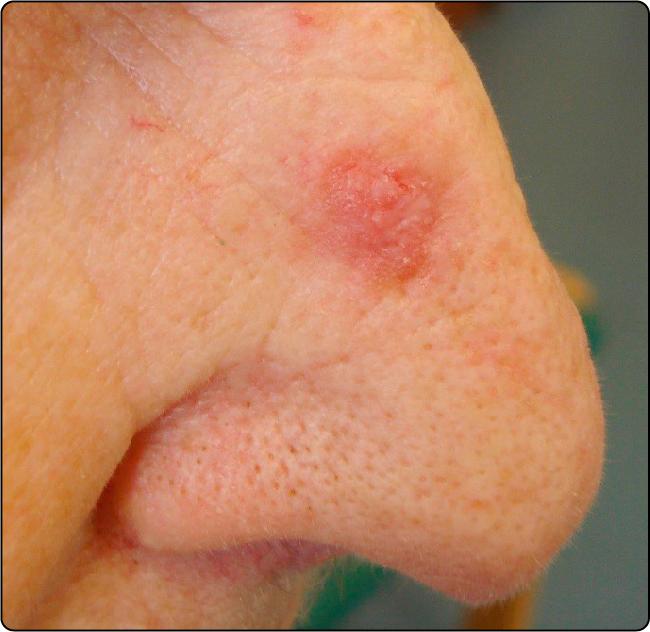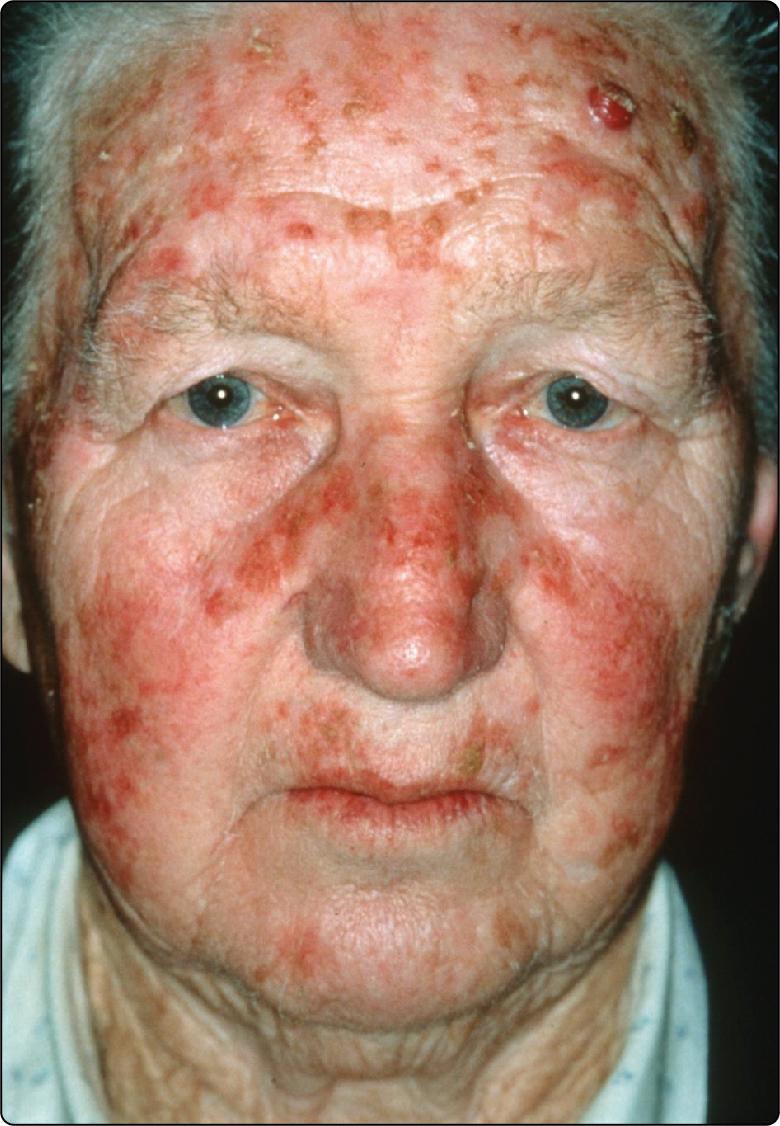Physical Address
304 North Cardinal St.
Dorchester Center, MA 02124
Premalignant disorders in the skin are those which, if left untreated, may become skin cancers. The most important cancers with pre-cancerous states include squamous cell carcinoma (actinic keratosis; syn. solar keratosis) and melanoma (dysplastic naevus), although it is important to note that the risk of either of the lesions progressing to cancer is low.
Actinic keratoses are induced by chronic exposure to ultraviolet (UV) radiation. Histologically, they show hyperkeratosis, abnormal keratinocytes with loss of maturation and dermal elastosis. UVB causes direct DNA damage and this can suppress the function of tumour suppressor genes (especially p53), leading to increased cell proliferation. UV damaged keratinocytes become clonal and proliferate whilst failing to undergo typical maturation in the epidermis, which results in histological dysplasia. Thus, some experts recommend that this is best described as keratinocytic intraepidermal neoplasia (KIN), classified as mild, moderate or severe (grade 1–3), in line with other classifications such as cervical intraepidermal neoplasia. Complete replacement of the epidermis by atypical (dysplastic) keratinocytes without invasion through the basement membrane represents squamous cell carcinoma in situ (Bowen’s disease; Chapter 57 ), whilst invasion through the basement membrane constitutes progression to squamous cell carcinoma ( Chapter 57 ).
Actinic keratoses may regress spontaneously. Although the exact long-term risk of any individual actinic keratosis progressing to a squamous cell carcinoma has not been determined, it is estimated that this is low and may represent up to 0.53% per lesion per year. As it is not possible to identify which actinic keratosis is at risk of progression, the consensus is that treatment is necessary.
Risk factors for actinic keratosis include:
old age
male sex
cumulative sun exposure
fair skin
immunosuppression, e.g. in renal transplant patients (p. 70)
genetic factors (e.g. albinos, xeroderma pigmentosum, p. 112).
Actinic keratoses are scaly, roughened patches, usually less than 1 cm in diameter, found on sun-exposed skin and are often easier to palpate than to see ( Fig. 55.1 ). They are almost only found on white skinned individuals, and typically show a pinkish colour, but may be red or skin coloured. Typical sites include the forehead, nasal bridge, tops of the ears and dorsal hands. Severely affected individuals will often show ‘field damage’ which describes whole anatomical areas (e.g. forehead) affected by multiple extensive actinic keratoses ( Fig. 55.2 ). Surrounding skin will usually show signs of chronic UV exposure such as telangiectasia, solar elastosis (wrinkles), solar lentigos, and dyspigmentation. Clinical and histological subtypes have been described including pigmented, bowenoid, hyperkeratotic, atrophic and lichenoid actinic keratoses.


An actinic keratosis needs to be distinguished from in situ squamous cell carcinoma (SCC) (Bowen’s disease), squamous cell carcinoma, keratoacanthoma, superficial basal cell carcinoma (BCC) and seborrhoeic keratosis. Biopsy is rarely needed to confirm the diagnosis, and it is important to recognize that a biopsy from the margin of a squamous carcinoma may only show actinic keratosis histology. Similarly, shave biopsies capturing only epidermal histology which show actinic keratosis change may not easily exclude squamous cell carcinoma because of the lack of dermis in the specimen. Therefore, clinicopathological correlation is critical for biopsies showing actinic keratosis.
Become a Clinical Tree membership for Full access and enjoy Unlimited articles
If you are a member. Log in here